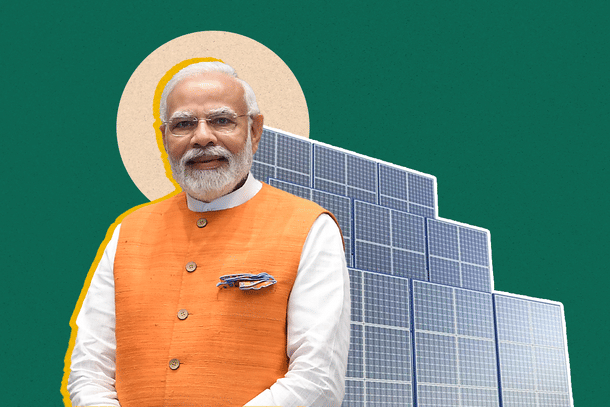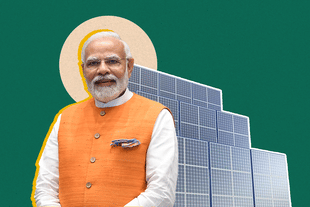News Brief
PM Surya Ghar Scheme Crosses Milestone Of 10 Lakh Rooftop Solar Installations
Kuldeep Negi
Mar 13, 2025, 04:00 PM | Updated 04:02 PM IST
Save & read from anywhere!
Bookmark stories for easy access on any device or the Swarajya app.


India’s ambitious push for residential solar power has crossed a major milestone, with 10 lakh homes now equipped with rooftop solar systems under the PM Surya Ghar: Muft Bijli Yojana (PMSGMBY).
Launched in February 2024, the scheme aims to bring solar energy to 1 crore households by 2026-27.
According to official figures, the initiative has received 47.3 lakh applications, and Rs 4,770 crore in subsidies have been disbursed to over 6 lakh beneficiaries so far.
The government has also introduced collateral-free loans of up to Rs 2 lakh at a 6.75 per cent subsidized interest rate, making it easier for households to install solar panels.
While the scheme promises zero electricity bills for many beneficiaries, it also plays a role in reducing carbon emissions, with each installation offsetting the equivalent of planting 100 trees.
Strong Uptake in Key States
Several states have made notable progress in adopting rooftop solar.
Chandigarh and Daman and Diu have met their solar installation targets for government buildings, leading the way in clean energy adoption.
Rajasthan, Maharashtra, Gujarat, and Tamil Nadu have also seen high participation, contributing significantly to the overall numbers.
To ensure smooth implementation, the government is actively monitoring progress and streamlining the subsidy process.
Subsidies are now processed within 15 days once applicants submit a redemption request.
How Households Benefit
The scheme provides direct financial relief to households by reducing or eliminating electricity bills.
Those generating excess power can also sell it back to the grid, creating an additional income source.
The government estimates that promoting rooftop solar could lead to annual savings of Rs 75,000 crore in electricity costs.
To make the process easier, households can apply for subsidies and select vendors through the National Portal, which also provides assistance in choosing the right system size and financing options.
Wider Impact: Jobs, Sustainability, and Local Manufacturing
The expansion of rooftop solar installations is expected to add 30 GW of solar capacity by 2027 and create 17 lakh jobs in sectors such as manufacturing, logistics, sales, and maintenance.
To support domestic industries, the government has mandated that all solar modules and cells used under the scheme be made in India.
This aligns with the broader Aatmanirbhar Bharat (Self-Reliant India) initiative, boosting local production of inverters and other solar components.
Solar-Powered Villages: A New Model for Rural India
As part of the scheme, the government has also announced the Model Solar Village initiative, which aims to develop one fully solar-powered village in each district.
Rs 800 crore has been allocated, with each selected village receiving around Rs 1 crore.
Villages will be chosen through a competitive selection process, and the one achieving the highest solar adoption within six months will receive the financial grant.
The initiative aims to promote energy self-reliance in rural India while encouraging widespread adoption of solar power.
Kuldeep is Senior Editor (Newsroom) at Swarajya. He tweets at @kaydnegi.





